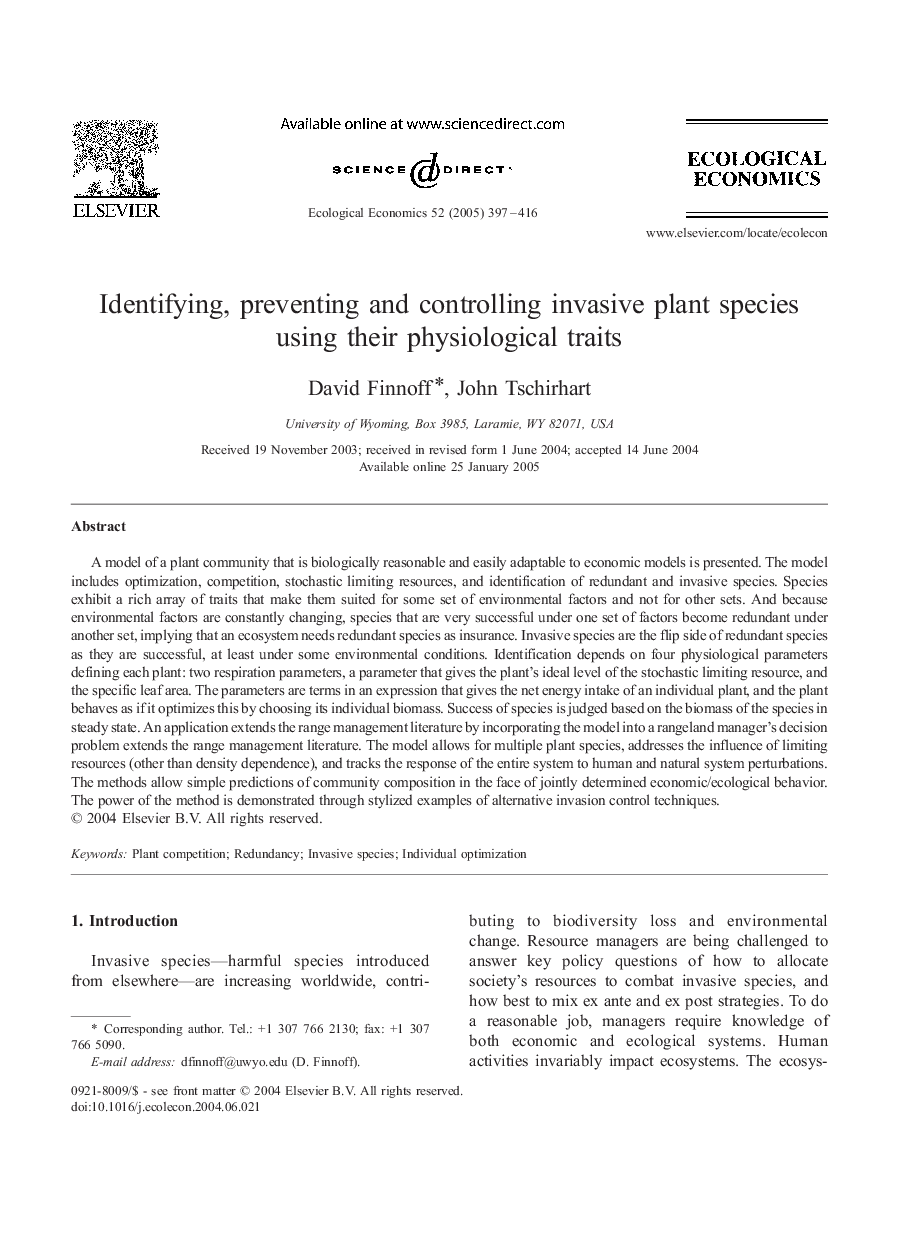| Article ID | Journal | Published Year | Pages | File Type |
|---|---|---|---|---|
| 9547833 | Ecological Economics | 2005 | 20 Pages |
Abstract
A model of a plant community that is biologically reasonable and easily adaptable to economic models is presented. The model includes optimization, competition, stochastic limiting resources, and identification of redundant and invasive species. Species exhibit a rich array of traits that make them suited for some set of environmental factors and not for other sets. And because environmental factors are constantly changing, species that are very successful under one set of factors become redundant under another set, implying that an ecosystem needs redundant species as insurance. Invasive species are the flip side of redundant species as they are successful, at least under some environmental conditions. Identification depends on four physiological parameters defining each plant: two respiration parameters, a parameter that gives the plant's ideal level of the stochastic limiting resource, and the specific leaf area. The parameters are terms in an expression that gives the net energy intake of an individual plant, and the plant behaves as if it optimizes this by choosing its individual biomass. Success of species is judged based on the biomass of the species in steady state. An application extends the range management literature by incorporating the model into a rangeland manager's decision problem extends the range management literature. The model allows for multiple plant species, addresses the influence of limiting resources (other than density dependence), and tracks the response of the entire system to human and natural system perturbations. The methods allow simple predictions of community composition in the face of jointly determined economic/ecological behavior. The power of the method is demonstrated through stylized examples of alternative invasion control techniques.
Related Topics
Life Sciences
Agricultural and Biological Sciences
Ecology, Evolution, Behavior and Systematics
Authors
David Finnoff, John Tschirhart,
